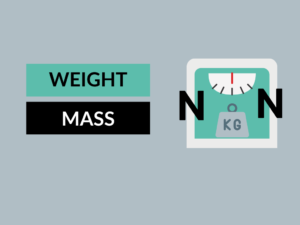Extensive vs. Intensive Properties: Understanding the Differences
Welcome to our comprehensive guide on extensive and intensive properties! In the world of thermodynamics and physical chemistry, extensive and intensive properties play a crucial role in understanding the behavior of substances and systems. In this article, we will explore what extensive and intensive properties are, provide examples, discuss their uses, and highlight the key differences between them. So let’s dive in!
What is Extensive Property?
Extensive properties are physical properties that depend on the size or amount of the substance being considered. These properties increase or decrease in proportion to the size or quantity of the substance. In other words, extensive properties are additive and directly related to the amount of matter.
Examples of Extensive Properties:
1. Mass: The mass of a substance increases as we add more of it.
2. Volume: Similarly, the volume of a substance increases with the addition of more material.
3. Energy: The total energy of a system is directly proportional to the quantity of matter present.
4. Length: The length of an object increases as more material is added to it.
Uses of Extensive Properties:
– Determining the total quantity of matter in a system.
– Calculating the energy requirements for a given process.
– Assessing the total mass or volume of a substance in a reaction.
What is Intensive Property?
Intensive properties, on the other hand, are physical properties of a substance that are independent of the amount of the substance present. These properties remain constant regardless of the size or quantity of the substance and are therefore not additive.
Examples of Intensive Properties:
1. Temperature: The temperature of a substance remains constant regardless of the amount of substance being considered.
2. Density: Density remains the same regardless of the quantity of the substance.
3. Pressure: The pressure exerted by a substance is independent of the amount of substance present.
4. Melting Point: The melting point of a substance remains constant, regardless of the amount of substance.
Uses of Intensive Properties:
– Identifying and characterizing different substances based on their unique properties.
– Predicting the behavior of substances under different conditions.
– Determining the purity of a substance.
Differences between Extensive and Intensive Properties:
| Difference Area | Extensive Properties | Intensive Properties |
|---|---|---|
| Dependence on Amount | Dependent on the amount of substance present | Independent of the amount of substance present |
| Additivity | Additive (Sum of properties for individual components of a system) | Non-additive (Same regardless of the size or quantity of substance) |
| Example | Mass, volume, energy | Temperature, density, pressure |
| Purpose | Quantify the total amount of substance in a system | Characterize substances and predict their behavior |
| Equation Form | Intensive Property = Extensive Property / Amount | Not applicable |
| Relation to Size | Increases with the size or amount of the substance | Remains constant regardless of the size or amount of substance |
| Physical State | Dependent on the amount of substance present | Independent of the amount of substance present |
| Summation | The total value can be obtained by summing up the individual values | The sum does not provide any useful information |
| Measurement Units | Metric units based on the quantity of the substance | Metric units independent of the quantity of the substance |
| Quantity Variation | Varies with the amount of substance present | Remains constant regardless of the amount of substance |
Conclusion:
In conclusion, extensive and intensive properties are two essential concepts in understanding the physical properties of matter. Extensive properties depend on the amount or size of the substance, while intensive properties remain constant regardless of the quantity. These properties have different purposes and are used to analyze and characterize substances in various scientific applications.
Knowledge Check:
Let’s test your understanding of extensive and intensive properties:
- Which of the following is an extensive property?
- a) Temperature
- b) Density
- c) Mass
- d) Pressure
- a) Volume
- b) Energy
- c) Temperature
- d) Length
- a) Extensive Property = Intensive Property * Amount
- b) Intensive Property = Extensive Property / Amount
- c) Extensive Property = Intensive Property + Amount
- d) Intensive Property = Extensive Property + Amount
- a) Temperature
- b) Density
- c) Mass
- d) Pressure
- a) Volume
- b) Temperature
- c) Density
- d) Length
- a) Temperature
- b) Density
- c) Mass
- d) Pressure
- a) Determining the total amount of matter
- b) Evaluating the energy requirements for a process
- c) Characterizing substances and predicting their behavior
- d) Assessing the total volume of a substance
- a) Volume
- b) Energy
- c) Temperature
- d) Length
Answers: 1. c, 2. c, 3. b, 4. c, 5. False, 6. c, 7. False, 8. c, 9. c, 10. c
Related Topics:
If you found this article on extensive and intensive properties insightful, you may also be interested in these related topics:
- Difference between Physical and Chemical Properties
- Role of Extensive Properties in Thermodynamics
- Applications of Intensive Properties in Material Science
- Determining Substance Purity using Intensive Properties
- Comparing Extensive and Intensive Properties in Biology


